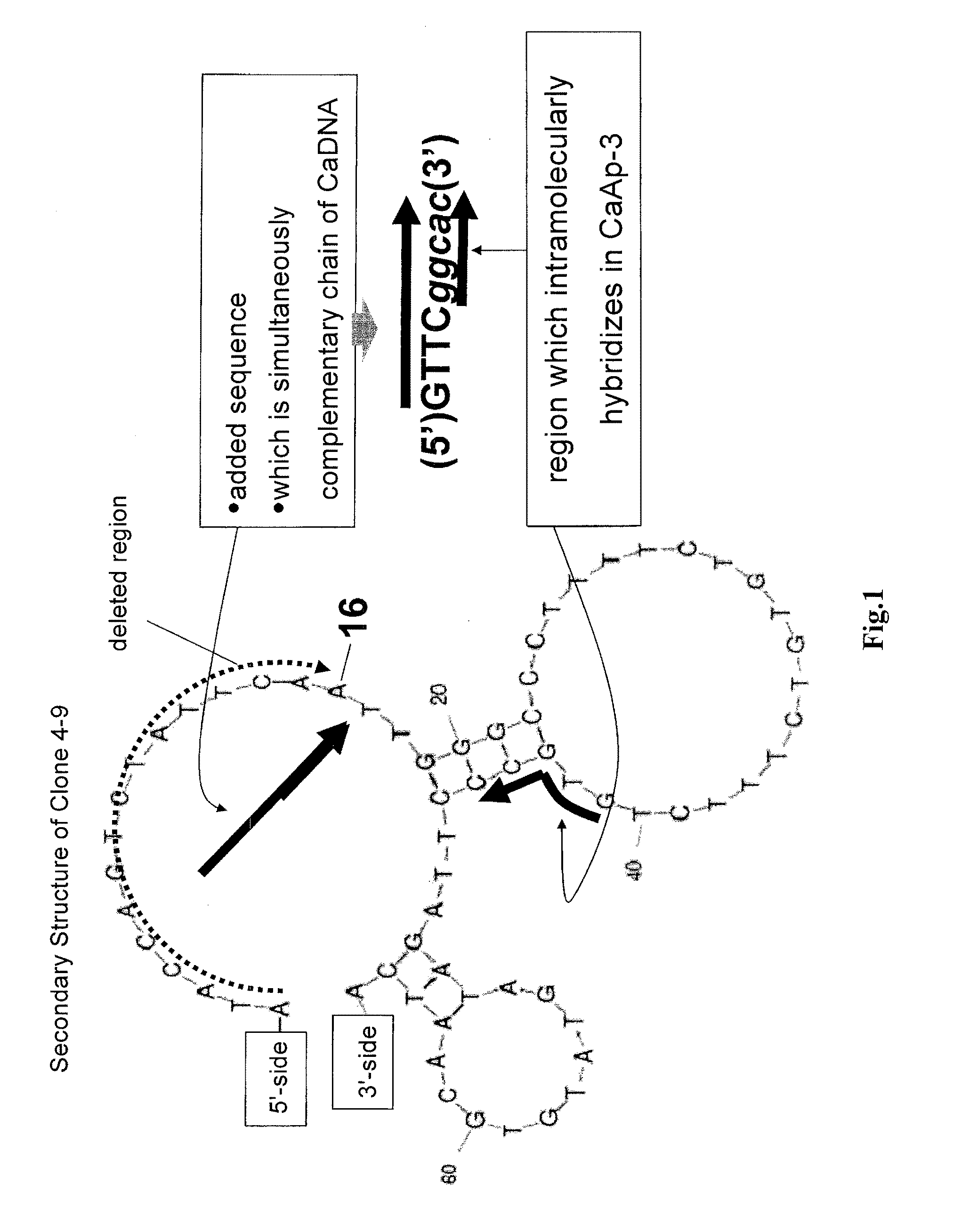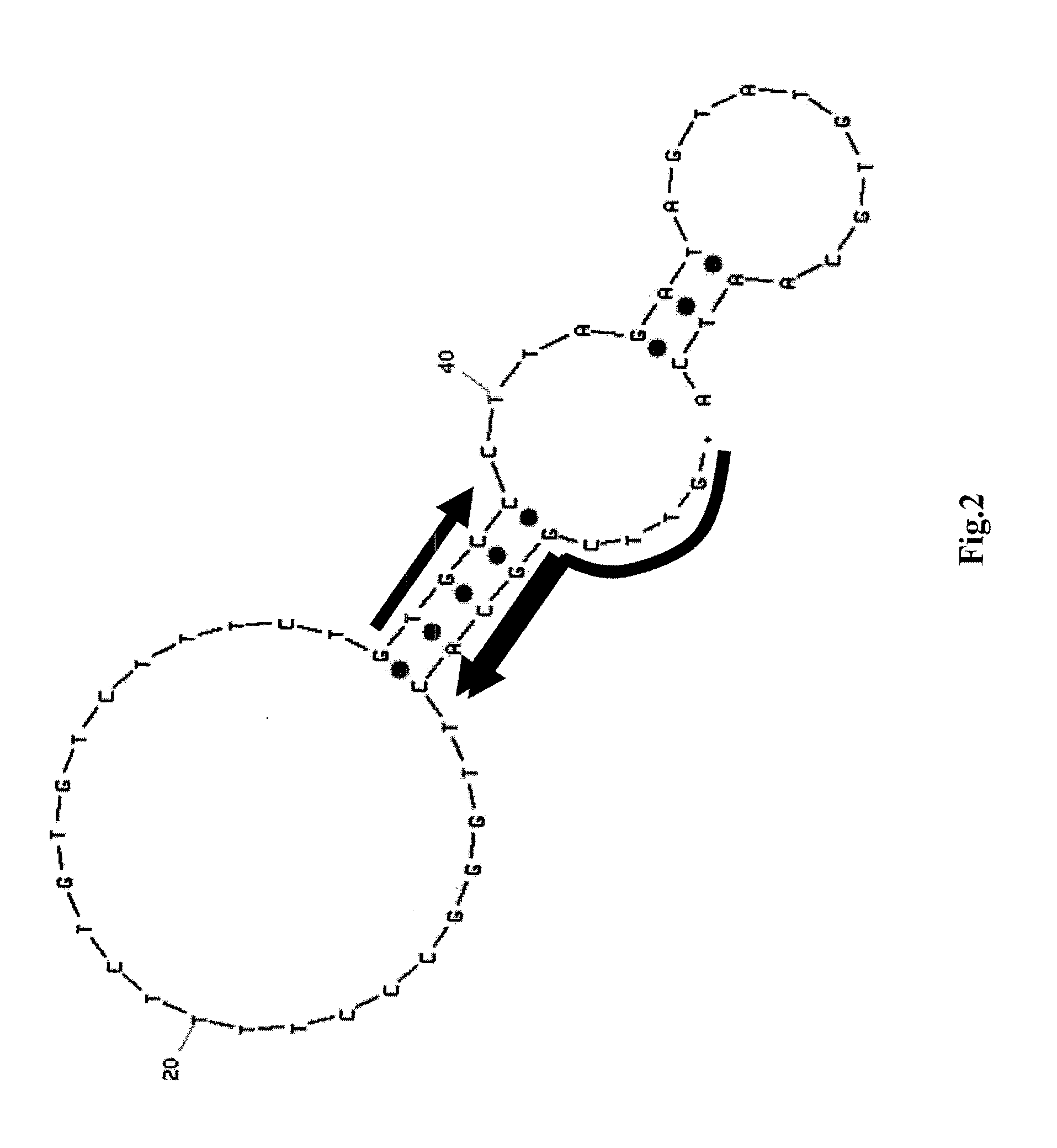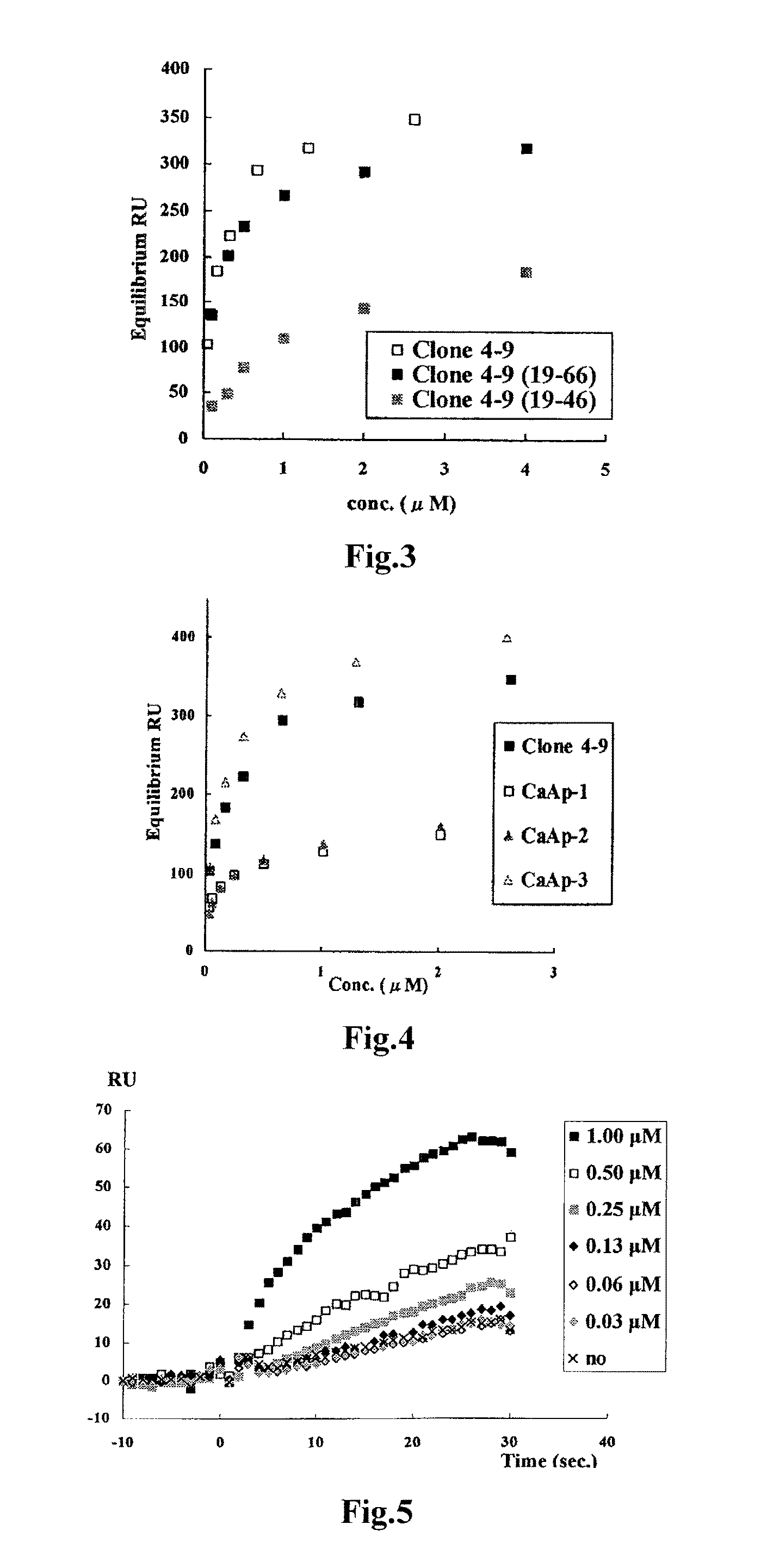Method of assaying target substance in sample, aptamer molecule and method of constructing the same
a target substance and aptamer molecule technology, applied in the field of methods for measuring test substances, can solve the problem of high cost of specific antibodies, and achieve the effect of preparing much more easily and inexpensively
- Summary
- Abstract
- Description
- Claims
- Application Information
AI Technical Summary
Benefits of technology
Problems solved by technology
Method used
Image
Examples
example 1
1. Preparation of α-PrP-Binding Aptamer
[0079]By the modification of SELEX described in Japanese Laid-open Patent Application (Kokai) No. 2007-14292, an α-PrP-binding aptamer was created as follows.
(1) That is, first, DNA having the base sequence shown in SEQ ID NO:1 was chemically synthesized by an automated DNA synthesizer. “N” in SEQ ID NO:1 is an arbitrary base, and, by the automated DNA synthesizer, a library of single-stranded DNAs was constructed, wherein the region, which is represented by the continuous Ns in SEQ ID NO:1 has a random base sequence. The single stranded DNAs were dissolved in binding buffer (10 mM Tris-HCl, pH 7.4, 100 mM KCl) to a concentration of 1 nmol / 100 μl, and heated at 95° C. for 3 minutes, followed by cooling of the solution slowly to the room temperature of 25° C., thereby allowing folding of the DNAs. The prepared single-stranded DNA solution was diluted to 3000 μl with the binding buffer, and the protein was immobilized.
(2) On a nitrocellulose memb...
example 2
Quantification of α-PrP by ELISA Using CaAp-3
[0091]CaDNA-3-11T wherein the thymine-oligo DNA of 11-mer was inserted into the 5′-end of CaDNA-3 (SEQ ID NO:6) as the spacer, was used as the immobilized DNA. After immobilizing 0.1 μM Ca DNA-3-11T (100 μL) on a streptavidin-coated plate, blocking was carried out with 1% skim milk. Various concentrations of α-PrP or BSA was mixed with 0.1 μM CaAp-3 (final concentration), and the resulting mixture was incubated at room temperature for 30 minutes. To the DNA-immobilized plate, 100 μL of this incubated sample was added, which sample was then incubated at room temperature for 2 hours. Thereafter, washing was carried out 4 times with 200 μL of PBS-T (0.05% tween20 (trade name)), and fluorescence measurement was carried out. PBS-T was also used for preparation of the sample.
[0092]The result of the fluorescence measurement is shown in FIG. 6. The fluorescence intensity changed in a manner dependent on the concentration of α-PrP. On the other ha...
example 3
Confirmation of Structural Change of CaAp-3 by Gel Shift Assay
[0094]CaAp-3 and CaDNA-3, which were FITC-labeled at their 5′-ends, were used. α-PrP and CaAp-3 were mixed and left to stand at room temperature for not less than minutes. Then CaDNA-3 was added thereto, and the resulting mixture was left to stand at room temperature for another not less than 15 minutes. Sample preparation was carried out using 150 mM NaCl and 20 mM phosphate buffer, and the samples were mixed to achieve the final concentrations of 4 μM α-PrP, 400 nM CaAp-3, and 400 nM CaDNA-3. Polyacrylamide gel electrophoresis was carried out using the prepared mixed sample, and the obtained gel was subjected to fluorescence scanning. As a control experiment, the same experiment was carried out, except that, instead of each sample, the buffer for the sample preparation was mixed. Electrophoresis was carried out with PhastSystem (GE Healthcare Science), using a 8-25% gradient gel.
[0095]The results of the gel shift assay ...
PUM
| Property | Measurement | Unit |
|---|---|---|
| Structure | aaaaa | aaaaa |
| Size | aaaaa | aaaaa |
Abstract
Description
Claims
Application Information
 Login to View More
Login to View More - R&D
- Intellectual Property
- Life Sciences
- Materials
- Tech Scout
- Unparalleled Data Quality
- Higher Quality Content
- 60% Fewer Hallucinations
Browse by: Latest US Patents, China's latest patents, Technical Efficacy Thesaurus, Application Domain, Technology Topic, Popular Technical Reports.
© 2025 PatSnap. All rights reserved.Legal|Privacy policy|Modern Slavery Act Transparency Statement|Sitemap|About US| Contact US: help@patsnap.com



